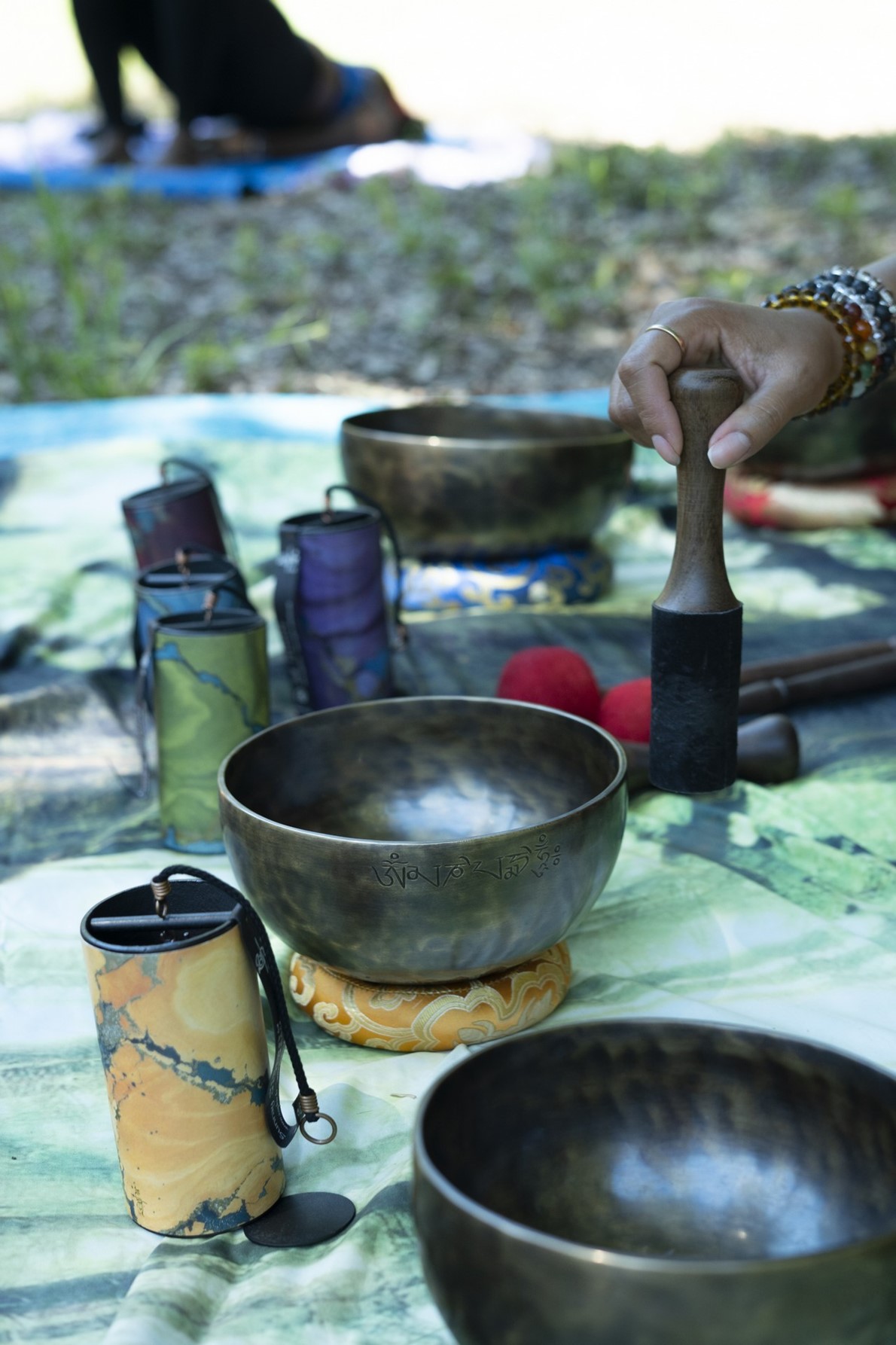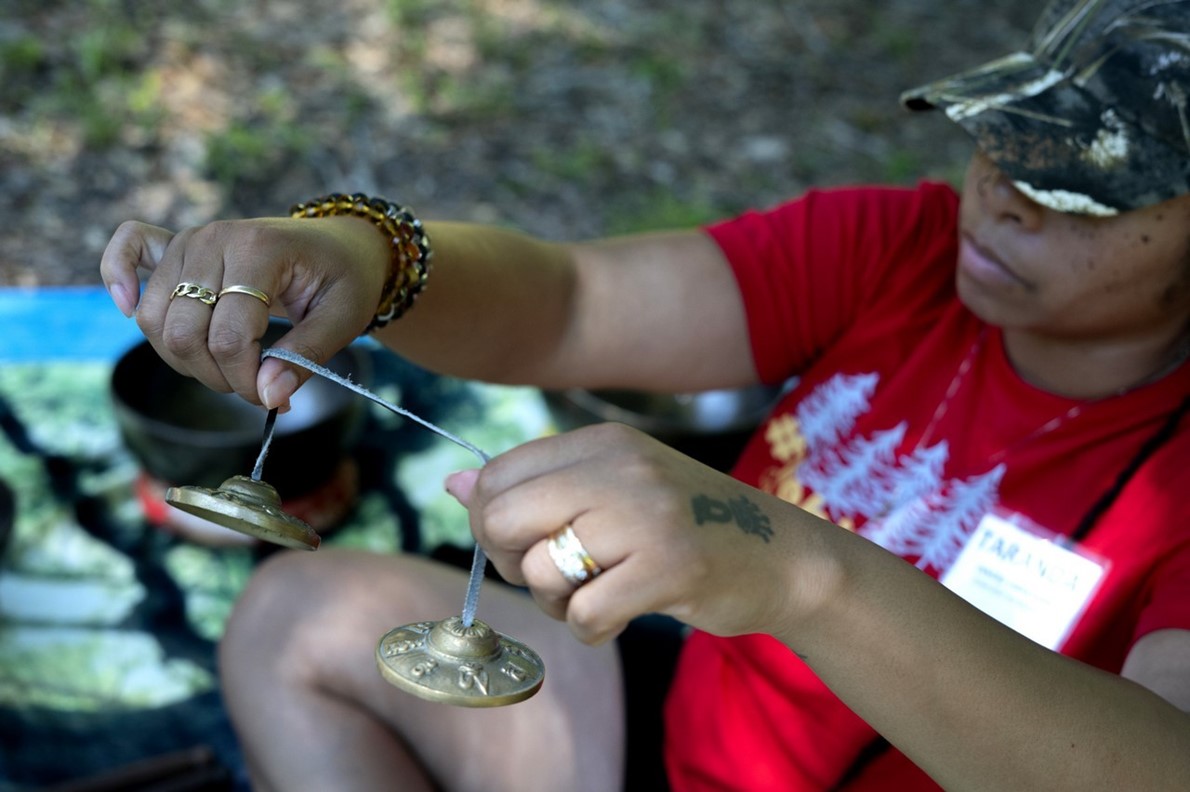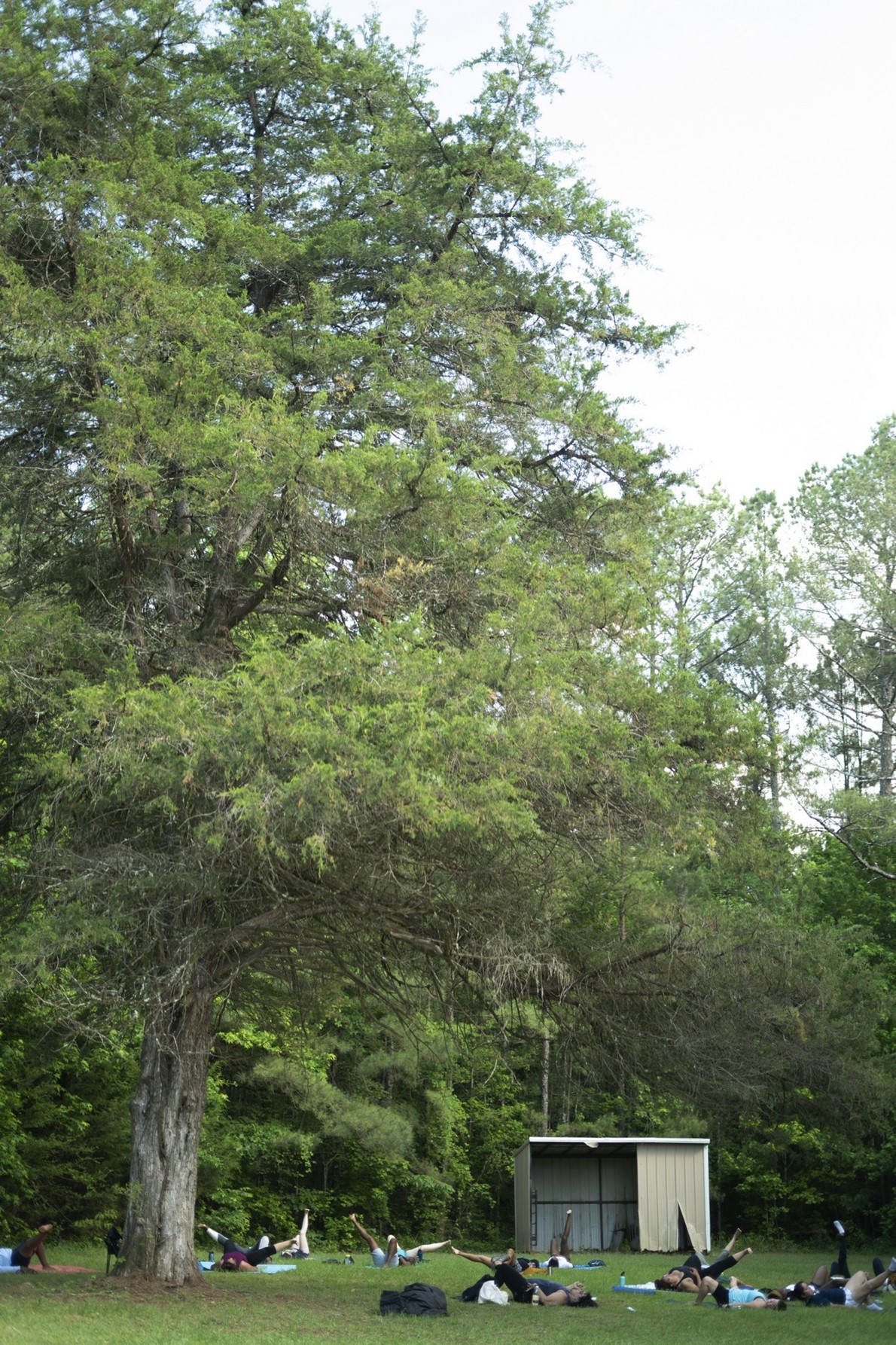For Cynthia Philips, it was the sound of
bees, willows and crickets, and the hum of a metallic Tibetan bowl that helped
her overcome some of her anxieties.
اضافة اعلان
In late May, Philips, a 64-year-old entrepreneur,
drove out to a Black-owned ranch in Crawfordville,
Georgia where she joined
dozens of other women for a camping trip. Tents were set up under large,
majestic trees, and hammocks were strung about. Over two days, the women did
yoga, hiked, meditated, wrote in their journals, and shared their life stories
with one another. They were there to heal.
Before the trip, recent events were keeping Philips
up at night. “What is happening here (the
US) is so devastating and poisonous,”
she said.
During the pandemic, she also had to sell her
business, a gym in Atlanta that she had poured her savings into, which had left
her feeling defeated.
At the campsite, Philips participated in what is
known as a sound bath — using waves of sounds, produced with tools like
metallic bowls or gongs, to meditate. “To be in nature and have those sounds
surround me,” she said, “there was a peacefulness and a serenity to it.” It
helped her feel connected to the forest, she said, and get past some of her
heartbreak.
While ancient philosophers from
Aristotle to
Siddhartha have long known that the outdoors can be an emotional and mental
balm, and scientists have repeatedly documented it, people of color have not
had equal access to some of the spaces that could provide mental health
benefits. Throughout the 19th and 20th centuries, they were systematically
excluded from outdoor recreational spaces (until the 1940s and 1950s, many
state and national parks had signs that read “For Whites Only”) and all but
scrubbed from the mythical narrative of the great American outdoors.

Today, there are some signs of change. Over the last
three years, the number of
Hispanic and
Black people participating in outdoor
activities (including hiking, jogging, fishing, and camping) has increased,
according to a 2021 report by the Outdoor Foundation, a nonprofit associated
with an outdoor industry trade group. Participation among Asians, however,
declined and most outdoor participants remain overwhelmingly white.
Organizations and online forums encouraging
communities of color to step outdoors as a way to improve mental health have
increasingly sprung up across the country. The Georgia campout, for instance,
was organized by Outdoor Journal Tour, a group that also leads one-day hikes
around the country. According to Kenya Jackson-Saulters, one of the founders,
attendance this year was double that of last year.
Other similar organizations, many of which are often
centered on Black, Indigenous, and Hispanic communities, like Outdoor Afro and
Hike Clerb, have also had a surge of participants in recent years. Tickets for
hikes would sell out “within minutes” during the pandemic, said Hike Clerb’s
founder, Evelyn Escobar. Because of demand, the group will be opening a New
York chapter later this year.
“The growth has truly been astronomical,” Escobar
said. “There are so many people around the country (US) who just want to feel a
sense of belonging and be able to tap into the healing energy of a collective
safe space outside.”
From Awe to Peace
There is a growing body of
evidence for the mental health benefits of wilderness and nature-based therapy,
often called ecotherapy. The first rigorous science on wilderness healing came
from
Japan in the late 1990s and early 2000s. Several Japanese researchers
collected health data from hikers before and after short excursions into the
lush forests of Japan and found that time spent in nature was correlated with
reduced blood pressure and cortisol (a stress hormone) levels, better immune
function and improved sleep.
Since then, other researchers have found that even
smaller doses of nature, from walking down a tree-lined street to having an
indoor plant at home, can have health benefits.
Though much of the existing ecotherapy research has
not focused on people of color, one of the reasons that experts suggest nature
is effective at bolstering mental health is because of its ability to inspire
awe. Awe is the sensation of being confronted by something so vast that it forces
us to reconsider our understanding of the world, according to researchers
Dacher Keltner and Jonathan Haidt, who published a paper on the emotion in
2010. While “vastness,” at its most basic level, means physical size and beauty
(the ocean or a mountain range), vastness can also refer to less tangible
elements, like the depth of talent (watching an incredible musician).

One 2018 study by researchers at the
University of California, Berkeley, found that 124 military veterans and youths from
underserved communities reported a 21 percent improvement in PTSD symptoms
after whitewater rafting trips.
Awe-inspiring natural spaces in the US., like
national parks, are tarnished with racist histories, according to Tracy
Perkins, an assistant professor at
Arizona State University who studies social
inequality and environmental justice. Many environmental conservation efforts
starting in the late 1800s were led by eugenicists, like Madison Grant, to
create spaces for white people to get fresh air and exercise in order “to
preserve the vitality of the white race,” she said.
Seemingly simple activities, like a walk in the
park, can unconsciously trigger a fight or flight response for some people,
making them hypervigilant for dangers, said Laura Marques Brown, a clinician at
Anchored Hope Therapy in Maryland who specializes in nature-based therapy for
low-income people of color. “I remind ecotherapists, especially white ones, to
consider how walking through dense woods as a Black person might feel.”
Acknowledging the racist history of the outdoors is
an important first step toward making people of color feel safer in nature,
Marques Brown said. She, for example, begins her one-on-one outdoor sessions by
walking clients through the history of the Indigenous land that the clinic is
on in an effort to make them feel less alienated in that natural space.
“I tell my clients that when we go outside, we are
with generations of family,” she said.
For others, joining a group outing can also help
puncture some of that unease. While Philips, the 64-year-old camper, went on a
solo backpacking trip through Europe years ago, she now feels less confident
outdoors in light of the recent spike in violence against people of color. When
she started hiking with Outdoor Journal, she found the diversity of the group
comforting. It felt “like a village,” she said.
In 2019, Charmaine Tillet, a 52-year-old veteran
who, after 15 years in the military, was dealing with post-traumatic stress
disorder, found a sense of “camaraderie” when she joined one of Leonard’s
outdoor hikes.
“I would feel almost like I’m suffocating around
crowds,” she said. “I had anxiety driving. I had anxiety in grocery stores. I
couldn’t leave the house. I wouldn’t leave the house.”

When Tillet went on her first camping trip with the
Sierra Club, with a group of other female veterans, she began to heal, she
said. “Being able to just take in the noises and sights of nature — there were
birds, we had a raccoon show up to our campsite” helped her relax, she said.
At one point, when they did
yoga by the water, she
fell asleep.
“It was the best sleep I’ve ever had,” Tillet said.
Read more Health
Jordan News



